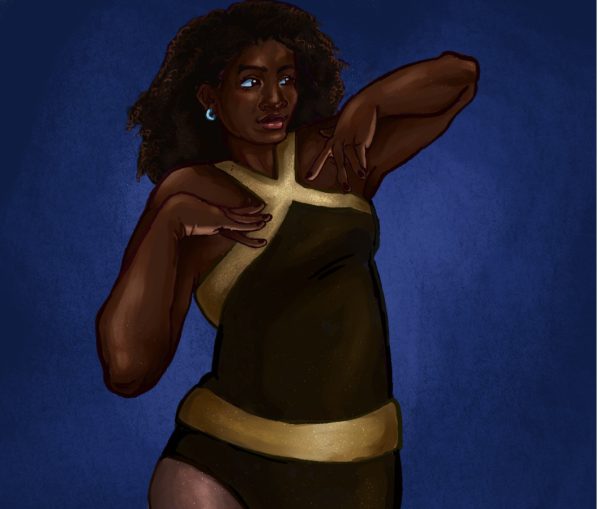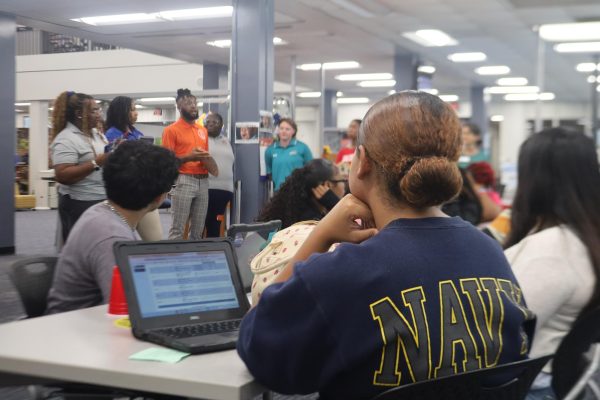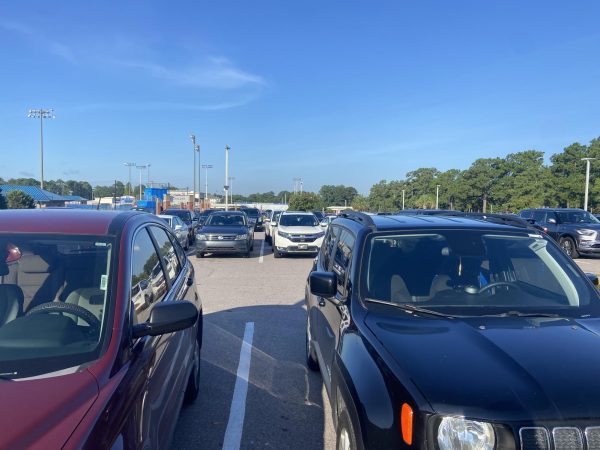Jumping the Gun – The United States and Gun Laws
302. That’s the number of school shootings that have occurred in the United States since 2013, starting from January 8th with Fort Myers’s Apostolic Revival Center Christian school, the timeline ending as of March 9th of 2018. A scarier fact: no one can predict where the next shooting will occur.
The topic of gun violence in America is a long, tedious history lesson followed up with the even more touchy topic of gun control. The taboo topic is a wound that’s re-opened every time a mass shooting occurs, and yet nothing gets done. The question everyone is asking: why?
A Carved in Wound
In order to tackle the topic of gun control, one must look at the history of gun control itself. Though it’s a lengthy one, it’s still one that needs to be addressed. The gun itself is almost seen as a symbol of American freedom- afterall: it’s all American had when fighting the revolution.

Private ownership didn’t occur until the Civil War, in which veterans were permitted to take home the guns they used. This was only encouraged, as during those days, from around every corner, the Americans had to worry about the Spanish, English and the Natives. Keep this in mind.
Only soldiers really knew how to use the guns. Even then, there were tons of recruits in the north who had no idea how to handle said guns. So, to compensate, a few veterans formed the NRA in order to teach citizens how to handle guns to prevent a shorthand of knowledge should another militia ever be needed again. In other words: the entire point of the idea behind giving citizens free and open armament was to protect themselves should militias ever be needed again- something that hasn’t happened in quite some times.
Unfortunately, technology advanced. A homicide spike occurred shortly after the revolver was invented- a gun that could shoot six shots without needing to be reloaded. A clear correlation can be seen between the time to reload being cut down and its popularity. Revolvers were popularized by most people during this time.
The revolver turned into the tommy gun a few decades later, unfortunately at the same time as prohibition occurred. Gang violence became heightened, even leading up to the St. Valentine’s day massacre in which Al Capone’s lackeys were killed. Seven men and one gun. As time continued, this would only serve as a larger problem.
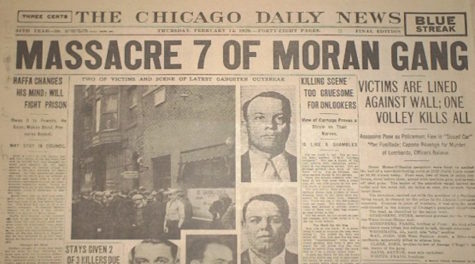
Technology was advancing in guns. Reloading times became shorter, accuracy becoming stronger and availability becoming more abundant. Even worse, after WWII, their manufacturing only increased. America had entered the vicious cycle of gun sales- being incited with fear, buying more guns to protect themselves, and creating a never ending cycle of production.
Chicago
Chicago is known as the “Murder Capitol,” and for good reason. In 2017 alone, Chicago had 609 accounted for deaths. Even worse, most of these deaths are accredited to guns. But what is the cause of this violence?
As mentioned before, Chicago’s gang history is deeply rooted as far back as prohibition. Gun circulation in Chicago is rampant to the point where even if someone couldn’t legally purchase a gun, it was easy to do so illegally. Children as young as 12 arm themselves almost like a morbid rite of passage for the future.
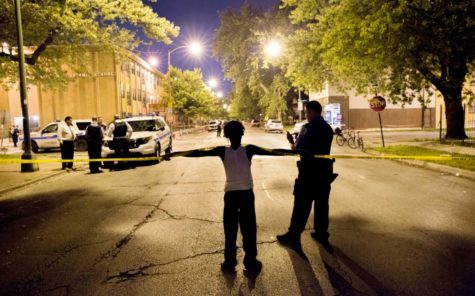
Why is this important?
Because it shows the effect of having guns as such an ingrained part of American culture.
The current gun laws in effect have done nothing to prevent this, and while the issue in part is gang violence, something that’s equally difficult control, it’s undeniable that the problem is definitely dependent on that of gun control laws themselves. So, the problem is clear- there’s too many guns and too many people who use them irresponsibly. This is a fact that ripples true across the nation, with things like New Yorkers not needing a permit to purchase a gun, or Maine’s issue with most of its commerce occurring between people without dealer licenses. The next question is: how do we solve it?
Congressional Approval(?)
Since Valentine’s Day, 2018, thousands of students have protested the horrific tragedy of Parkland. Walkouts, marches, all kinds of formal protests were organized. Richland Northeast even had one as of March 14th, 2018.
So far, we’ve heard many proposals, including arming teachers which is a horrible idea, an opinion agreed upon by many from both sides of the gun debate. However, recently, House proposed the STOP School Violence Act. This act introduced training to handling the situation to teachers, and more physical enhancements such as metal detectors and stronger locks.
While yes, the physical improvement is certainly helpful, the training in question points back to arming teachers. There’s already a problem of accidental discharges within schools. In fact, in the previously cited timeline, there’s numerous of these accidents being accredited to accidental discharge in a place where a gun shouldn’t have been in the first place. This being said, to arm teachers would essentially be putting students at a bigger risk.
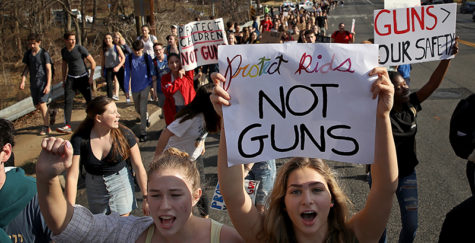
Children protesting at Montgomery Blair Highschool
Even then, if you put a teacher in training, there have been numerous stories of police officers under the pressure of a felon coming at them, about to kill them, and they can barely pull the trigger and often times shoot the wrong person. If a police officer can make that mistake with an adult felon, imagine in the case of a school shooter. Often times, school shooters tend to be someone who is or was a student. There’s a high chance the teacher could easily shoot the wrong student.
America has this fascination with guns in situations like these to the point where it’s concerning. It began far back when cowboys were glorified for their stone cold killings. There’s a fixation on ‘if you have a gun, you’re unstoppable.’ The unfortunate thing is- this simply isn’t true. The thing is, a gun is a tool. Just like tools, they can be used incorrectly or correctly. By giving everyone a gun and expecting them to be able to virtually unstoppable, a dangerous assumption is made that puts both the user and the person on the business end in a world of trouble.
Conclusion
Seven kids and teens shouldn’t have to die everyday. In fact, 100 people shouldn’t have to die, either. Unfortunately, we may never find a permanent solution to appease both sides. However, guns are now accounted for as the third leading cause of deaths children 5-14. 1,600 homicides against teens and kids occur every year by a gun. Number seven could be anyone’s child, which is why America needs to reform its laws and do something about the causalities that have occurred due to the mass production and sales of guns.
First of all, ditch the idea that teachers having any arms will somehow protect children. This only worsens the issue. Students will become too nervous to attend school, as even with training it’s no guarantee every teacher will be able to follow procedure. Even then, in the event of a shooting, there’s again the risk the casualty rate will climb due to all the teachers being armed; a child could be shot in mistake of the shooter.
Second of all, we need to close the loop hole. What is the loop hole? Unlicensed sales of guns. There needs to be a crackdown on unlicensed sales, as this is where a lot of the issue comes from. With no regulation, there’s no need for a real background check between an unlicensed dealer and someone who can easily be the next Dylan Roof or Elliot Rodgers. It’s background checks that have reduced violence compared to when they were prior implemented, it’s background checks that simply need to be revised to fit today’s modern needs.
Third of all, collecting data and analyzing exactly where the root of the problem is would definitely help. This already occurred in Lafayette Parish, La. Safety officials saw there was a particular area criminals would go to steal guns. They then established a public campaign to educate on proper gun storage. It’s things like education and analyzing that will help America work towards a more stable gun control law. It may take years, but it’s better gradual and stable than immediate and unstable.
Finally, there needs to be more resources, in particular to those who have mental illness. There’s a common trend among shooters and mental illness. Mental illness has slowly been on the climb with 1 in 5 adults being diagnosed each year. Even worse, a recent study shows that 17% of American youth experience some sort of mental, emotional, or behavior disorder. That’s 40 million people who are lacking access to good medical care for their illness. While not every single mentally ill person is going to commit a shooting, most people who do commit atrocities such as Parkland have been mentally ill, so the first step is tackling the issue at the root of the problem.
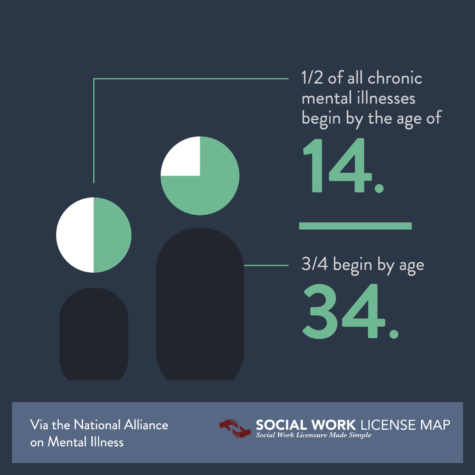
In short, guns and America have had a long, rocky relationship that dates back to our very founding. Gun violence has had an even more complicated history which cripples the nation to this very day. However, with each tragedy, the discussion is opened but nothing is ever done to remedy the situation. Eventually, something needs to be done to prevent these atrocities. Something needs to be done to prevent number 303.
Your donation will support the student journalists of Richland Northeast High School. Your contribution will allow us to attend conferences, purchase equipment and cover our annual website hosting costs.



